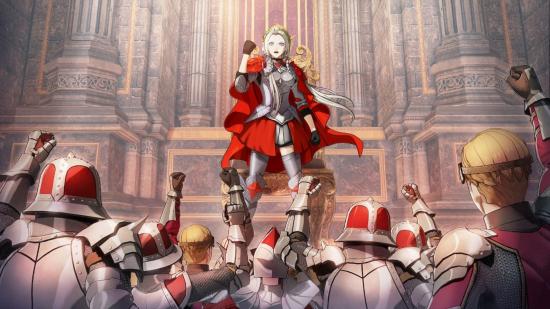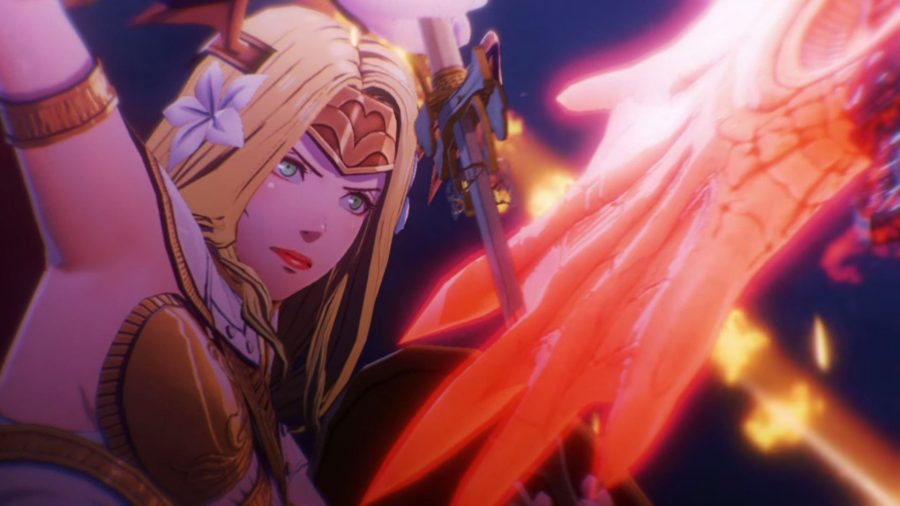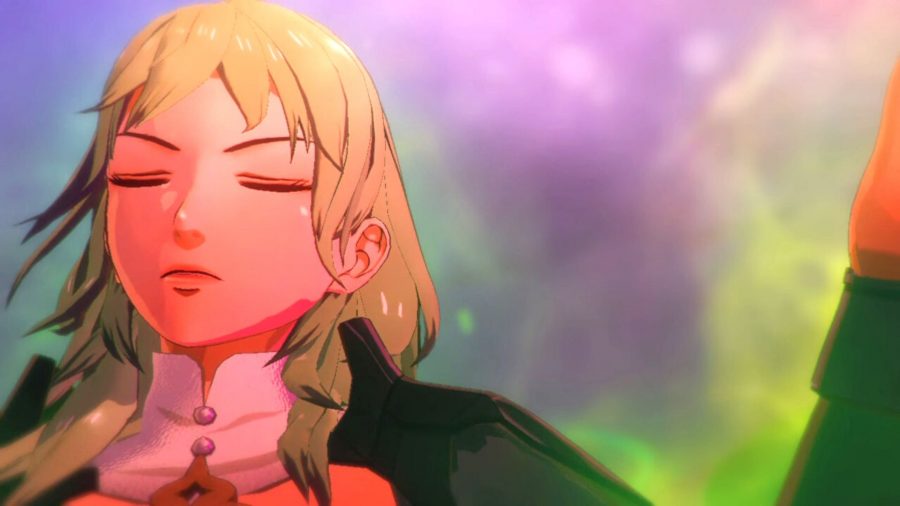Our Verdict
Fire Emblem Warriors: Three Hopes is the best musou spin-off to date, offering an unbelievable amount of storytelling that any fan will delight in. Swirling around all this is a cacophony of mechanics that may at first overwhelm, but once they make sense, the game is harmonious and hard to put down. It feels like a mainline Fire Emblem game with more action, which might actually be music to the ears of anyone who’s not tried the series before.
A rising tide lifts all ships, and Fire Emblem is one of the many Nintendo titles that have found a lot of brand new fans thanks to the success of the Nintendo Switch. When Fire Emblem: Three Houses came out in 2019, it received excellent reviews and great sales, with 3.4 million copies sold within its first 18 months.
Now, I’m not going to say we’re in a Fire Emblem reawakening (sorry), but it’s definitely seeping into the mainstream more than ever before, feeling more comfortable alongside the Nintendo big dogs of Mario and Zelda. Now, with the second musou spinoff from Koei Tecmo’s Omega Force, Fire Emblem Warriors: Three Hopes, it looks ready to bring in even more fresh recruits.
My main takeaway from playing through one of the three storylines in Three Hopes is that this is just an excellent Fire Emblem game, end of. The reason it may appeal to a new section of Switch owners is that it swaps out the mainline games’ tactics combat with musou hack and slash, while maintaining almost all of the other stuff that makes these games so special.
But, the original Fire Emblem Warriors did that, right? So what makes Three Hopes so good? Well, simply put, I think that this feels like a mainline Fire Emblem game, unlike its predecessor. It feels like playing Yakuza 0 after you’ve played Yakuza: Like a Dragon if that makes sense. It still feels like part of the main series, even though things are different.
There’s quite a lot to Three Hopes, manifesting in a kind of exhaustive list of elements that could sound disparate on paper. There are the battles, which involve furious 1v1000 combat where you have to take down fortresses or defend allies in their retreat, and they’ll be familiar to anyone who’s played a musou game before.
But, it would really be reductive to say “here we go again, more of the same.” This is a beautifully fine-tuned musou game, forcing you to juggle multiple elements, change direction on the fly, and keep track of a myriad of allied units and enemy assaults. Countless battles feel like they’re an inch away from overwhelming you, but you can always pull through.
In order to achieve said pulling through, you’re going to need to do a whole lot of virtual hacking and slashing. Every character – there are a lot of characters – has a different class – and there are a lot of classes – all of which have different combos. You can also switch between up to four characters mid-battle to cover different areas of the map or make use of their specific advantages.
Learning the combos was great fun in my first few hours, and it didn’t stop there. The sheer number and variety of classes match up to Three Houses’ depth, and every single one feels different to play. Some are more fun than others, such as quick thieves or elegant swordmasters, while magic-users can sometimes feel painfully slow. But all in all, there’s enough variety that it feels like anyone can find their match.
If you’ve ever seen a musou game in action, it’s easy to assume they’re just big, wobbly button-mashers. But, especially with the Fire Emblem spin-offs, they require a bit of a strategic mind, which makes the experience much more engaging, almost akin to a third-person Total War game.
For example, if your main objective is to rescue a civilian trapped in a stronghold on the opposite side of the map, you may send all your troops to their location. But that might not be the best idea, as certain enemy counterattacks, ambushes, or all manner of other side-quests can immediately put you on the back foot.
So, to solve this problem, you can give your troops orders via the map screen. Send them to guard someone or something, attack a big monster, or be an adjutant to your character to increase their bond (removing them from battle but increasing your special attack damage), and generally just hope that everything goes as well as it can.
I played on the standard difficulty, and most of the early battles do go pretty smoothly, even with a mistake here or there. But later on, you may often feel so overstretched and overwhelmed that getting to the end victorious feels like a genuinely hard-earned win. When you get through by the skin of your teeth, that’s where the fun is.
The game is kind, however, giving you different options to make your experience less overwhelming. You can choose a slow and steady option, or go with a quick and efficient mode at any point during the game. The former gives you all the strategic information prior to battles, as well as different stat and tutorial pop-ups, while the latter does away with that, which can help battles feel more free-flowing.
You can also choose between casual and classic, but can only change down from classic – not the other way around – once you’ve started your game. Casual mode means fallen allies will return after the battle, while in classic mode they’re lost forever. This is the quintessential Fire Emblem experience, making you really care about the impact of your decisions, as losing characters can lead to you missing out on their story arc.
In my first ten or so hours, it felt like permadeath wouldn’t matter unless I ramped up the difficulty, but by the time I was nearing the end of the game, I restarted battles a handful of times because I wasn’t ready to lose any of my characters. That’s basically cheating, and yes I feel bad. But do know, if you want that old-school, hardcore FE experience, it’s there for you in the latter half.
All this grand-scale fighting has often meant that most musou games have pretty ropey framerates. I’m pleased to say that isn’t the case here. Slow down does occur, but only at seriously crowded moments. Whenever I got the framerate to dip it almost felt like a reward, like the game saying “look, you got so many enemies into this wacky katamari that I can’t handle it anymore.” These moments also barely lasted a few seconds, so there still isn’t much to worry about.
To access all this fighting you’re shown a large map, the type an old-timey general would move wooden soldiers across to plan tactics. On this map, you can see your camp (more on that later) and multiple points for you to attack. You don’t have to do all of them, but you can only advance to ones that share a border with a battle you’ve already completed.
This gives you some choices. Do you hoon it straight for the next main battle to move the story along? Or do you meticulously clear out the map? If it’s the former, the story moves along at a great pace, but big, end-of-chapter battles will be a little more difficult to overcome.
This isn’t just because of the resources you gain from battles, like gold and building materials that go towards making your warriors stronger. There are also different strategies you can employ in a battle to turn the tide, but you only get the currency for them and discover some of them thanks to completing other optional battles.
These strategies can be simple, such as a handful of extra soldiers at a critical stronghold, or quite game-changing, like the persuade strategy. Thanks to the story, you often come across characters from the other two houses and have to fight them. If you use the persuade strategy, you don’t have to kill them, but rather get them to join your side. They then become playable, which is pretty important if you’re a fan of certain characters.
And when it comes to characters, this game doesn’t skimp. Not only are all the classmates from the three different houses present, but also a huge number of characters from the source material. It feels like absolutely everyone is here.
Well, except Byleth, the main character from Three Houses. In this alternate reality, Byleth doesn’t join Garreg Mach monastery as a teacher, but rather stays a mercenary. Instead of donning their black gown, you get to take on the role of Shez, a mercenary with a mysterious power lying within, and – in classic Fire Emblem fashion – a voice inside their head called Arval, who looks a bit like a humanoid Pokémon.
Shez meets the three house leaders at the beginning of the game and gets invited back to Garreg Mach to become a student. That’s where you get to choose your house, which will then take you down one of the three storylines. The three stories cross over, but are also unique, and offer a grand view of the giant war ravaging Fódlan. I played through the Scarlet Blaze route, joining the Black Eagles house, as well as playing the prologues of the other two stories.
All of that took me around 40 hours and every hour was full of story content. From what I can tell, the other two storylines are just as deep, offering reams of conversation among the different students, as well as many unique story moments, including those classic FE heart-to-hearts. The sheer amount of stuff in this game almost matches up to its source material, and that is astounding.
But, stuff is no good if it’s boring, and while Three Hopes may not feel as polished as Three Houses, it takes quite a keen eye to see. All the characters’ dialogue is well written, and there are some genuinely funny moments in there too. If you’re a true Three Houses devotee, the overflowing well of content in this game feels absolutely essential.
But you don’t just see characters debating the ethics of a war that threatens to split apart the long-held peace of Fódlan, you also get to hang out with them at camp. The camp acts like the monastery in Three Houses, though it’s a little smaller and has a little less to do. You can go on expeditions with your allies, make them dinner, do some chores, or get training for the next battle.
All this adds to your bonds with different characters, as well as their bonds with each other. This classic Fire Emblem system is just as engaging here. Increasing everyone’s bonds unlocks conversations, which further deepens these inter-character relationships and their personalities, making for yet another rewarding element in a title chock-full of them.
So, there’s clearly a heck of a lot to do in this game. There’s the battles, which are beautifully fine-tuned, and the admin. The admin is everything that involves a menu. At first, it can really feel like there’s too much to keep track of, with bonds, inventories, weapons, classes, abilities, consumables, magic etc. But once you get your head around it – and you’ll have a much easier time doing so if you’ve played Three Houses – it turns into a wonderfully rewarding mesh of different game mechanics.
So, my main question after all of this is, who’s Fire Emblem Warriors: Three Hopes for? Well, anyone who likes Omega Force’s previous Warriors games will love this, as it’s just as good as any of the best. But I also think that any Fire Emblem: Three Houses fan will become quickly enamoured. Sure, there aren’t any tactical battles, but is that really the reason you play a Fire Emblem game?
Because, if you can accept switching from tactics to hack and slash, then you’ll find a deep and engaging story to get swept up in. Everything feels like Three Houses, from the menus and items to the dialogue and overarching story, helping you feel right at home from the start. Then, you get to spend time and build bonds with these characters all over again, in a new context but with the same vigour.
What I’m trying to get at is that this game fits. The characters make sense. The story feels important. Every inch of gameplay outside of the hack and slash feels Fire Emblem through and through. It feels homely, familiar, and comfortable.
Fire Emblem Warriors: Three Hopes sets a new standard for what Koei Tecmo can do with a top-tier Nintendo series. It offers so much to love, whether it’s the combat or the characters, and does it all with huge amounts of polish, care, and consideration. Every conversation, vignette, grand story moment, and humorous sketch is a delight to see if you care about these characters, and there’s so much of it. It’s just so rewarding to be back with all of them again.














